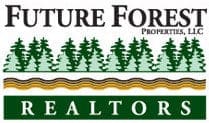Creating any management plan for your hunting property starts with a good inventory. You need to have a great understanding of the habitat you currently have within your land before you start doing any management work.
You also need to have a map in hand or mapping software that can help you when you begin your inventory process.
Next, you have to divide your property within the same habitat and break them into units. For instance, you assign a unit for any stands of timber (with the same age and composition) or assign each opening as one unit.
Now, once everything in your property has been mapped out into units, go for a ground survey to evaluate some of the units for habitat composition. You don’t have to complete the inventory in one day. You just need to take note of the major players in your property: invasive species, dominant species, and other plant and animal species that may live within your property. Aside from listing an inventory, make sure that you mark them on your inventory map for future reference.
Start Making Decisions
After you get an idea of how your property looks, you can now start making sound decisions about what you want to do with your property. You don’t have to know everything in an instant. You just need to paint a picture of how you want your property to look with all the inventory you have right now.
Using your mapping software or a new map in hand, you can start plotting out the things that you want to be settled in specific areas within your property. You can lay out sanctuaries, food plots, soft and hard mast trees, bedding areas, and a lot more.
If you’re new to this, plotting out the things can be quite a challenge and would require you to have solid knowledge and understanding of the deer habitat and its management.
So when you start making decisions about your property, you need to keep in mind all the possible scenarios that would give the best habitat using the things that you currently have surrounding your property. You cannot create something that isn’t available and hard to maintain, so it’s best to always plan realistically and accordingly.
One important thing that you should also consider is the huntability within your property. You need to ensure that you know the primary wind direction because you don’t want to spend a lot of time and money setting up food plots, for instance, and you can’t even hunt on it because of irregular wind direction.
Your Actual Game Plan
You already plotted everything on paper. The next step is to take action and create an actual game plan.
Depending on your property size and the habitat, you can set up a 5-year or a 10-year-plan, so you won’t get overwhelmed with the amount of work you need to do to lay everything out from paper to your actual land.
You can divide your long-term plan into small annual actionable steps so you’ll be able to reach your goals one step at a time.
Evaluate Your Progress
One of the basic aspects of having a management plan is to see where you are and the direction you want to go next. These are all important for you to stay on track.
Evaluating your progress should be done annually because every time, you can expect to see changes that can affect your plan each year. These changes can keep you from following your schedule or can make you feel frustrated. But because you have a long-term management plan, you can just rethink new strategies and reapply them, so you’ll still get to tick out small achievable goals by the end of the year.
Conclusion
Managing your hunting property can be a bit overwhelming, especially if you have no prior experience. But with a long-term management plan, you have a guide on how to move forward. So even if you experience scenarios that take you a few steps back, with a management plan in place, you can still stay on track.
Future Forest Properties has a team of experienced and professionally trained land managers to develop an efficient and effective method for assessing, marketing, and selling hunting land in NY. Contact us today and let us assist you with your land purchase or sale.

